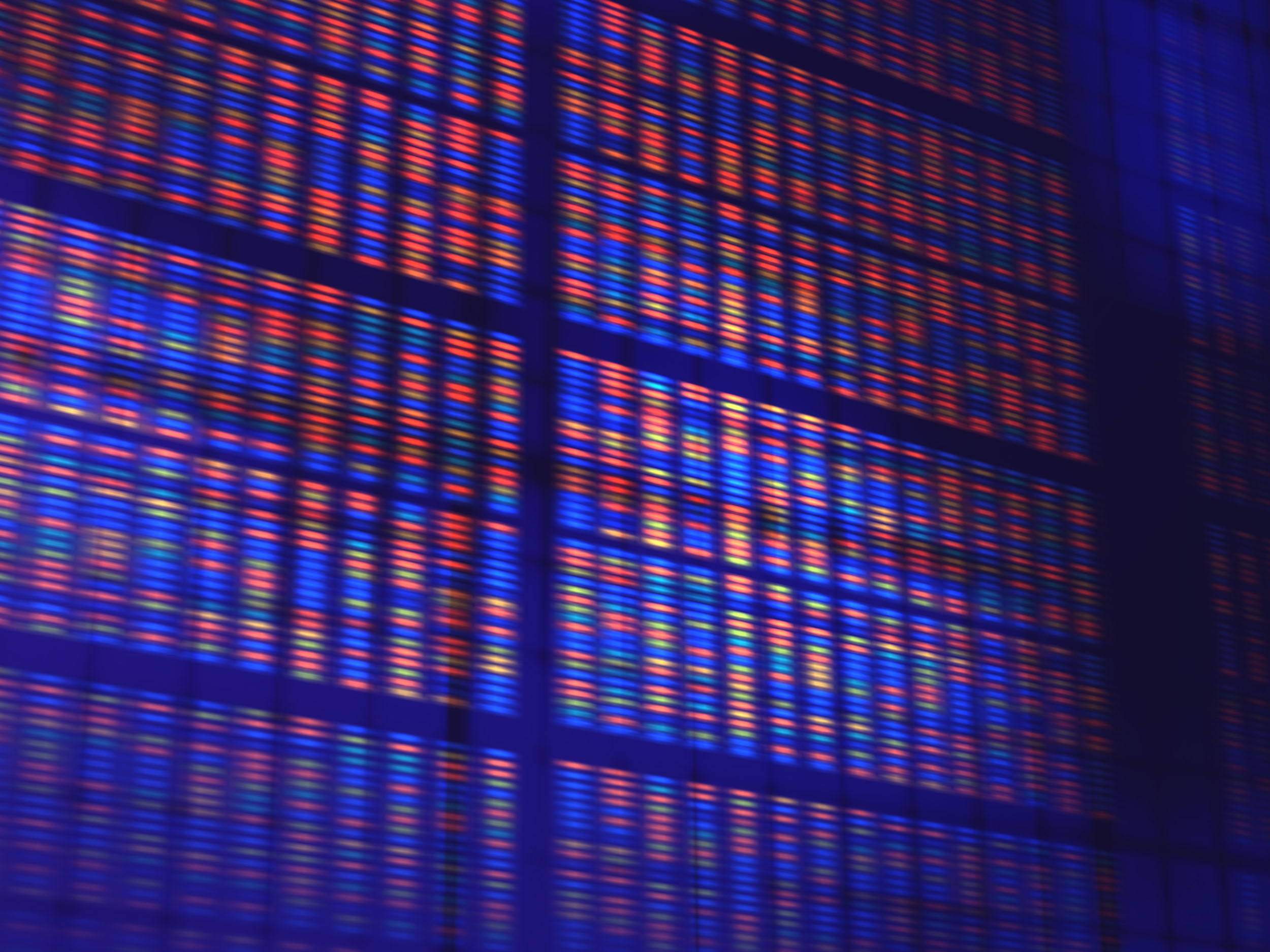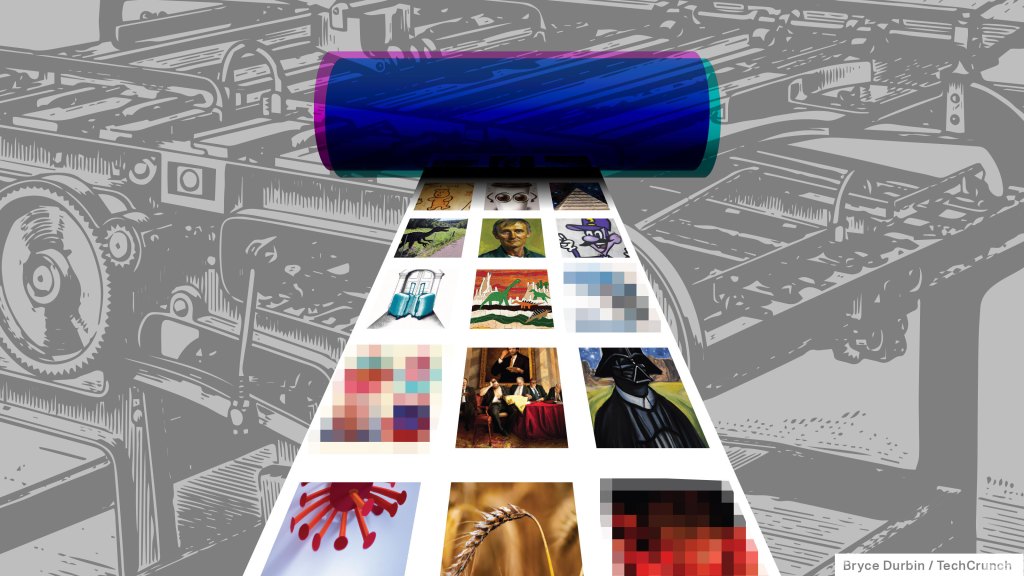Text-to-image AI exploded this year as technical advances greatly enhanced the fidelity of art that AI systems could create. Controversial as systems like Stable Diffusion and OpenAI’s DALL-E 2 are, platforms including DeviantArt and Canva have adopted them to power creative tools, personalize branding and even ideate new products.
But the tech at the heart of these systems is capable of far more than generating art. Called diffusion, it’s being used by some intrepid research groups to produce music, synthesize DNA sequences and even discover new drugs.
So what is diffusion, exactly, and why is it such a massive leap over the previous state of the art? As the year winds down, it’s worth taking a look at diffusion’s origins and how it advanced over time to become the influential force that it is today. Diffusion’s story isn’t over — refinements on the techniques arrive with each passing month — but the last year or two especially brought remarkable progress.
The birth of diffusion
You might recall the trend of deepfaking apps several years ago — apps that inserted people’s portraits into existing images and videos to create realistic-looking substitutions of the original subjects in that target content. Using AI, the apps would “insert” a person’s face — or in some cases, their whole body — into a scene, often convincingly enough to fool someone on first glance.
Most of these apps relied on an AI technology called generative adversarial networks, or GANs for short. GANs consist of two parts: a generator that produces synthetic examples (e.g. images) from random data and a discriminator that attempts to distinguish between the synthetic examples and real examples from a training dataset. (Typical GAN training datasets consist of hundreds to millions of examples of things the GAN is expected to eventually capture.) Both the generator and discriminator improve in their respective abilities until the discriminator is unable to tell the real examples from the synthesized examples with better than the 50% accuracy expected of chance.

Top-performing GANs can create, for example, snapshots of fictional apartment buildings. StyleGAN, a system Nvidia developed a few years back, can generate high-resolution head shots of fictional people by learning attributes like facial pose, freckles and hair. Beyond image generation, GANs have been applied to the 3D modeling space and vector sketches, showing an aptitude for outputting video clips as well as speech and even looping instrument samples in songs.
In practice, though, GANs suffered from a number of shortcomings owing to their architecture. The simultaneous training of generator and discriminator models was inherently unstable; sometimes the generator “collapsed” and outputted lots of similar-seeming samples. GANs also needed lots of data and compute power to run and train, which made them tough to scale.
Enter diffusion.
How diffusion works
Diffusion was inspired by physics — being the process in physics where something moves from a region of higher concentration to one of lower concentration, like a sugar cube dissolving in coffee. Sugar granules in coffee are initially concentrated at the top of the liquid, but gradually become distributed.
Diffusion systems borrow from diffusion in non-equilibrium thermodynamics specifically, where the process increases the entropy — or randomness — of the system over time. Consider a gas — it’ll eventually spread out to fill an entire space evenly through random motion. Similarly, data like images can be transformed into a uniform distribution by randomly adding noise.
Diffusion systems slowly destroy the structure of data by adding noise until there’s nothing left but noise.
In physics, diffusion is spontaneous and irreversible — sugar diffused in coffee can’t be restored to cube form. But diffusion systems in machine learning aim to learn a sort of “reverse diffusion” process to restore the destroyed data, gaining the ability to recover the data from noise.

Diffusion systems have been around for nearly a decade. But a relatively recent innovation from OpenAI called CLIP (short for “Contrastive Language-Image Pre-Training”) made them much more practical in everyday applications. CLIP classifies data — for example, images — to “score” each step of the diffusion process based on how likely it is to be classified under a given text prompt (e.g. “a sketch of a dog in a flowery lawn”).
At the start, the data has a very low CLIP-given score, because it’s mostly noise. But as the diffusion system reconstructs data from the noise, it slowly comes closer to matching the prompt. A useful analogy is uncarved marble — like a master sculptor telling a novice where to carve, CLIP guides the diffusion system toward an image that gives a higher score.
OpenAI introduced CLIP alongside the image-generating system DALL-E. Since then, it’s made its way into DALL-E’s successor, DALL-E 2, as well as open source alternatives like Stable Diffusion.
What can diffusion do?
So what can CLIP-guided diffusion models do? Well, as alluded to earlier, they’re quite good at generating art — from photorealistic art to sketches, drawings and paintings in the style of practically any artist. In fact, there’s evidence suggesting that they problematically regurgitate some of their training data.
But the models’ talent — controversial as it might be — doesn’t end there.
Researchers have also experimented with using guided diffusion models to compose new music. Harmonai, an organization with financial backing from Stability AI, the London-based startup behind Stable Diffusion, released a diffusion-based model that can output clips of music by training on hundreds of hours of existing songs. More recently, developers Seth Forsgren and Hayk Martiros created a hobby project dubbed Riffusion that uses a diffusion model cleverly trained on spectrograms — visual representations — of audio to generate ditties.
Beyond the music realm, several labs are attempting to apply diffusion tech to biomedicine in the hopes of uncovering novel disease treatments. Startup Generate Biomedicines and a University of Washington team trained diffusion-based models to produce designs for proteins with specific properties and functions, as MIT Tech Review reported earlier this month.
The models work in different ways. Generate Biomedicines’ adds noise by unraveling the amino acid chains that make up a protein and then puts random chains together to form a new protein, guided by constraints specified by the researchers. The University of Washington model, on the other hand, starts with a scrambled structure and uses information about how the pieces of a protein should fit together provided by a separate AI system trained to predict protein structure.

They’ve already achieved some success. The model designed by the University of Washington group was able to find a protein that can attach to the parathyroid hormone — the hormone that controls calcium levels in the blood — better than existing drugs.
Meanwhile, over at OpenBioML, a Stability AI-backed effort to bring machine learning-based approaches to biochemistry, researchers have developed a system called DNA-Diffusion to generate cell-type-specific regulatory DNA sequences — segments of nucleic acid molecules that influence the expression of specific genes within an organism. DNA-Diffusion will — if all goes according to plan — generate regulatory DNA sequences from text instructions like “A sequence that will activate a gene to its maximum expression level in cell type X” and “A sequence that activates a gene in liver and heart, but not in brain.”
What might the future hold for diffusion models? The sky may well be the limit. Already, researchers have applied it to generating videos, compressing images and synthesizing speech. That’s not to suggest diffusion won’t eventually be replaced with a more efficient, more performant machine learning technique, as GANs were with diffusion. But it’s the architecture du jour for a reason; diffusion is nothing if not versatile.































Comment